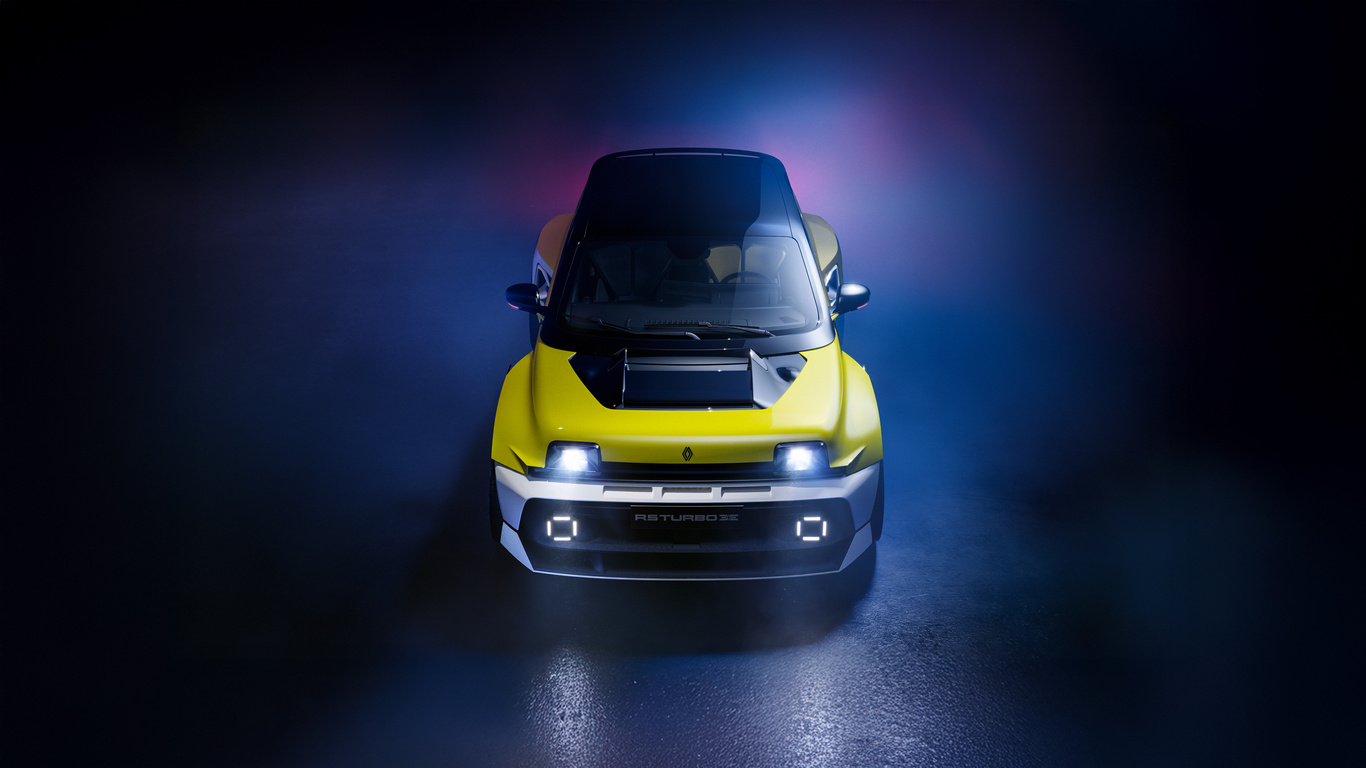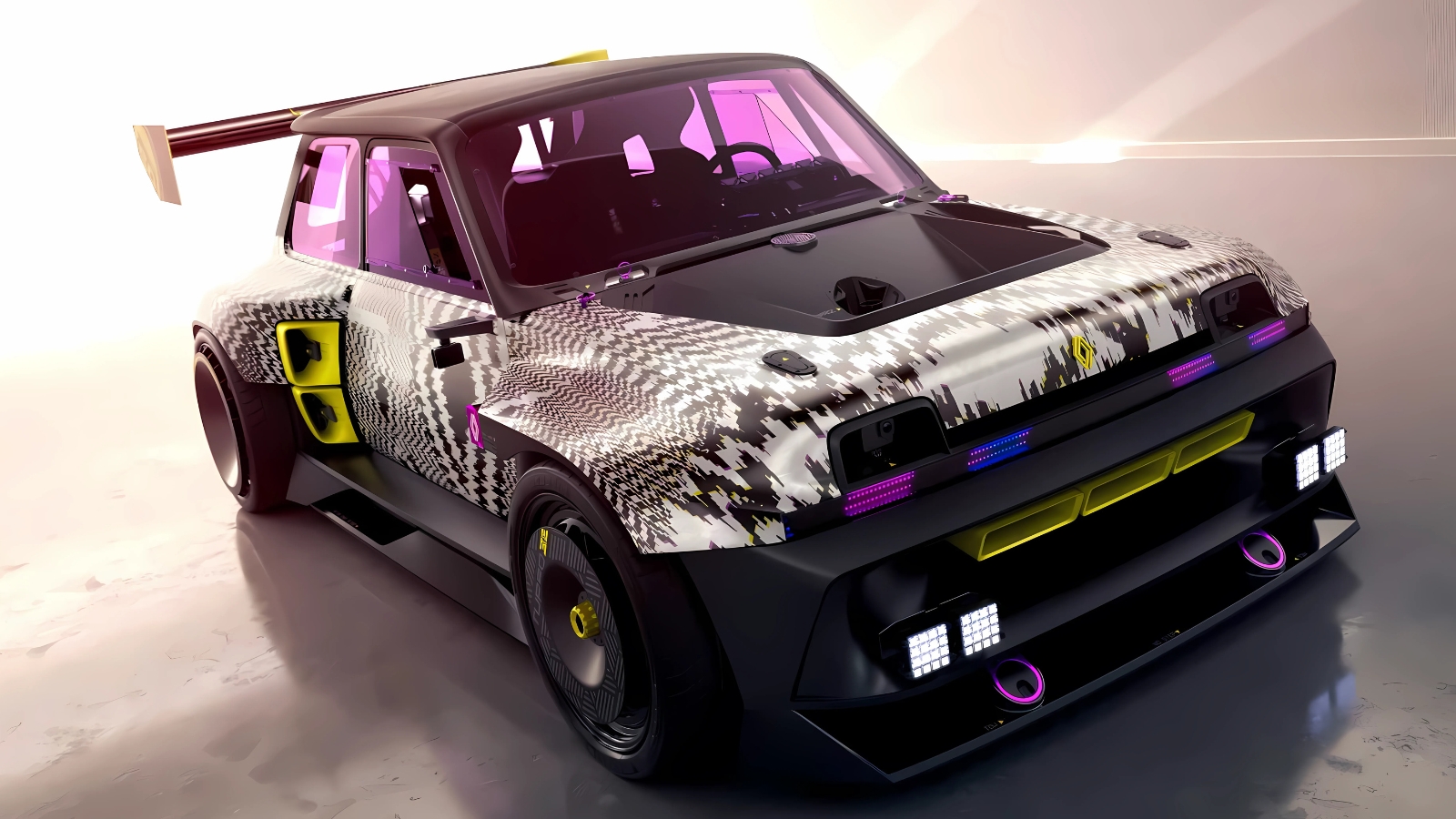Renault 5 Turbo 3E : The automotive world has witnessed something remarkable: a £140,000 electric hatchback that’s completely sold out for the next four years. The extreme Renault 5 Turbo 3E is sold out until 2028, with just half the build run still to be allocated, proving that there’s still enormous appetite for truly special performance cars, even when they carry supercar-level price tags.
The Renault 5 Turbo 3E represents more than just another electric vehicle launch; it’s a bold statement about the future of performance motoring and a masterclass in how heritage can be successfully reimagined for the electric age. The 533bhp hyper-hatchback is an electric tribute to the original Renault 5 Turbo, with wild styling, a totally bespoke platform and supercar-baiting performance.
The Phenomenal Success Story
When Renault first announced the 5 Turbo 3E’s pricing, many industry observers questioned whether anyone would pay Porsche 911 money for a French hatchback, regardless of its performance credentials. Those doubts have been emphatically answered. Just 1980 units planned to be produced – a reference to the launch year of the original car – and the first 1000 cars have now been spoken for.
The demand has been so overwhelming that prices now start at £140k for the remaining cars, slightly inflated over the £135k launch price. This price increase reflects not just inflation or rising costs, but genuine market demand that exceeds supply—a rare phenomenon in today’s automotive landscape.
Renault has confirmed the first batch of its mad, 536bhp 5 Turbo 3E hot hatch has already sold out. That means 700 people have signed up to pay £135,000 – at least – for a slice of wide-arched, rear-drive hooliganism masquerading as a fast electric car. The enthusiasm has been so immediate that within hours of opening reservations, hundreds of orders flooded in from both individual customers and dealer networks.
Technical Marvel Behind the Madness
Understanding why the 5 Turbo 3E commands such pricing and generates such enthusiasm requires examining the extraordinary engineering that underpins this machine. This isn’t simply a standard Renault 5 with a bigger battery and more power—it’s an entirely different beast built from the ground up.
Revolutionary In-Wheel Motor Technology

The heart of the 5 Turbo 3E’s performance lies in its innovative powertrain architecture. The 5 Turbo 3E is loosely based on today’s retro-styled Renault 5 electric supermini but with a bespoke platform, its own bodywork and a pair of in-wheel motors. This in-wheel motor setup represents cutting-edge technology that eliminates traditional driveshafts and allows for precise individual wheel control.
The system delivers 536bhp on the back axle, 0-62mph in less than 3.5s and a 15-minute 15-80 per cent charge time, putting it firmly in supercar territory for straight-line performance. The 70kWh battery pack incorporates 800V architecture, enabling rapid charging capabilities that address one of the primary concerns about high-performance electric vehicles.
Lightweight Construction Mastery
Perhaps even more impressive than the power figures is how Renault has managed weight distribution and overall mass. Its carbon-composite structure means it has a kerb weight of around 1450kg, which is just 1kg more than the Renault 5 despite its larger battery pack, extra performance and additional motor. This achievement in lightweight engineering demonstrates sophisticated materials science and packaging efficiency.
The platform sits under a bespoke body made of lightweight materials, with only the mirror, door handle and tail-lights carried over from the standard Renault 5. This means virtually everything else has been redesigned and reengineered specifically for performance applications.
Market Response and Customer Profile
The success of the 5 Turbo 3E reveals fascinating insights about today’s luxury performance car market and who’s willing to spend six figures on an electric hatchback.
Who’s Buying These £140k Hyper-Hatches?
Project leader Michael Grosjean provides insight into the customer base: “We have various customers, but what is common to all is that they are all passionate about wild cars and sports cars. Some are owners of the original R5 Turbo, and they want to have the new one as well. Some have more cars – Alpines, Ferraris, Porsches – and they find that this car is different, exotic in the landscape.”
This reveals that the 5 Turbo 3E isn’t competing directly with mainstream performance cars—it’s positioned as a collectible, exotic addition to already extensive garage collections. These aren’t first-time performance car buyers; they’re enthusiasts who already own multiple high-end vehicles and see the Renault as offering something genuinely unique in the market.
The international appetite has been remarkable, with customers spanning different continents and automotive cultures, all drawn to the combination of heritage, exclusivity, and cutting-edge technology that the 3E represents.
Production Timeline and Future Prospects
Understanding the production schedule helps explain why delivery times stretch so far into the future and what this might mean for potential buyers.
Limited Production Run Strategy
“Currently, we are globally at half of the total volume, so reservations are for delivery in 2028,” project leader Michael Grosjean told Autocar. The 3E is due to finish production in 2029, meaning the entire production run will span just two to three years.
This deliberately constrained production approach serves multiple purposes. It maintains exclusivity, allows Renault to perfect the complex manufacturing processes involved, and ensures that demand remains strong throughout the production run. It’s understood assembly will begin in 2027, with a planned production run of two years.
The success could potentially influence Renault’s future product strategy. Grosjean said there are not currently any plans to follow it up with similarly extreme limited editions but other models in the line-up could be celebrated in the same way. When asked about potentially creating heritage-inspired versions of other Renault models, Grosjean said: “It’s possible. It’s not planned, but why not?”
Why This Matters for the EV Industry
The 5 Turbo 3E’s success represents more than just one manufacturer’s triumph—it provides important insights for the broader electric vehicle industry and performance car market.
The project demonstrates that electric powertrains can generate genuine enthusiasm among traditional performance car enthusiasts when properly executed. Rather than simply electrifying existing platforms, Renault has created something genuinely new and special, proving that EVs can be collectible, desirable objects rather than mere transportation appliances.
The pricing success also suggests that the market for ultra-high-performance electric vehicles is more robust than many predicted. By positioning the car at supercar price levels and selling out anyway, Renault has shown that electrification doesn’t necessarily mean commoditization.
For other manufacturers, the 5 Turbo 3E provides a template for how heritage brands can leverage their history while embracing new technology. The careful balance between retro styling cues and cutting-edge engineering creates something that appeals to both nostalgia and innovation.
| Specification | Details |
|---|---|
| Power Output | 533-536 bhp |
| Drive Configuration | Rear-wheel drive with in-wheel motors |
| Acceleration | 0-62 mph in under 3.5 seconds |
| Battery Capacity | 70 kWh |
| Charging Architecture | 800V system |
| Charging Time | 15-80% in 15 minutes |
| Weight | 1,450 kg |
| Production Numbers | 1,980 units total |
| Production Period | 2027-2029 |
| Starting Price | £140,000 (increased from £135,000) |
| Current Availability | Sold out until 2028 |
Frequently Asked Questions
Q: Why is the Renault 5 Turbo 3E so expensive? A: The high price reflects its bespoke carbon-composite platform, cutting-edge in-wheel motor technology, limited production run of just 1,980 units, and extensive customization options.
Q: When can I actually get one if I order today? A: New orders are currently being allocated for delivery in 2028, as the first half of the production run is already sold out.
Q: How does it compare to the original 1980s Renault 5 Turbo? A: While paying visual homage to the original, the 3E is entirely new with 533 bhp versus the original’s 160 bhp, electric power instead of turbocharged petrol, and modern safety and technology features.
